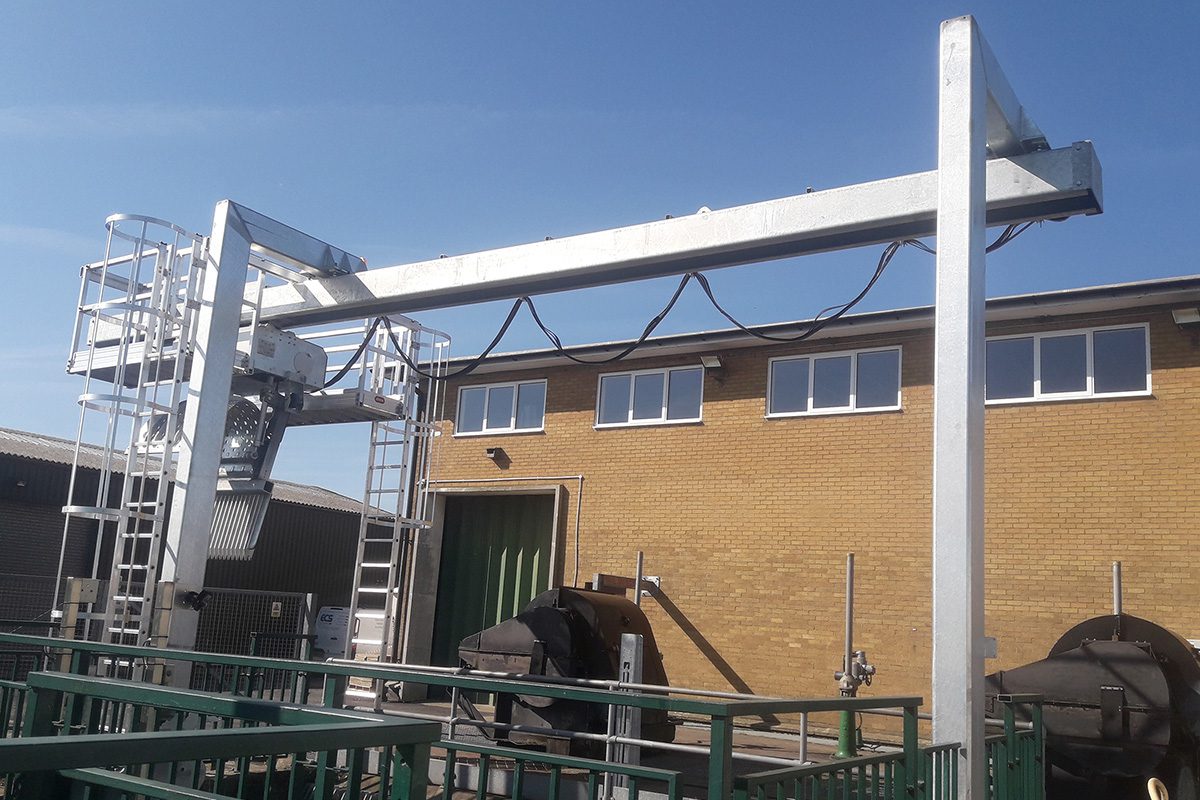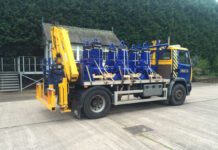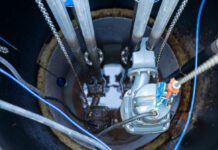
A new Landustrie weed screen cleaner installed by ECS Engineering Services at the Short Ferry pumping station on the River Witham has ensured continuity of water supply to the Toft Newton Reservoir 10 miles (15km) away in Lincolnshire.
The reservoir’s main function is to maintain flow in the River Ancholme, but it is also a popular destination for anglers, birdwatchers and other visitors keen to enjoy the beauty of the area. Short Ferry is its main infeed pumping station, so runs almost constantly to maintain supplies.
ECS has recently refurbished and modernised the main pump house at Short Ferry and was also asked to work on the weed screen that keeps the inlets clear and free flowing. Tom Burgin, The ECS Project Engineer who oversaw the weed screen job says:
“We started with an inspection and survey. There are in fact two screens side by side and these were found to be in good shape with many more years’ service left in them. However, the cleaner was coming towards the end of its useful life and it was decided to replace it before it became unreliable.”
The original cleaner was of a hydraulically driven robotic arm type that is no longer popular. ECS weighed up the options and decided on a new cleaner designed around a grab that could be lowered over the screens on cables by winches. This would benefit from being mechanically simple and therefore able to provide many years of dependable service despite its wet outdoor location.
The grab was designed and built by ECS’s partner company, Landustrie, in the Netherlands. They delivered it to site where ECS took responsibility for installation and commissioning.
“It is based on a well proven design,” explains Tom. “The grab compresses debris against the backplate, safely and efficiently removing foreign materials from the inlet screens.”
In operation, the grab is opened, dropped down one screen, closed to pick up a load, raised, then traversed to drop the weed into a waiting skip. The grab is sized to be one-third the width of each screen, so three drops are used per screen to completely clear it.
The grab is rated with a safe working load of 800 kg. The load, plus the weight of the grab and its cables totals a maximum of 1475 kg and the winch and motor are sized to comfortably cope with this. The control system is set so that after the grab collects a load there is a four second delay to let water drain away, thus considerably reducing the weight to be lifted to the top of the screen.
“The backplate is perforated with holes to aid the drainage, and there are several other thoughtful details designed into the system,” says Tom. “For instance, the grab operates automatically twice a day at 6am and 6pm, when its function is really to scare birds away so that they learn to keep their distance.”
Its screen cleaning duty cycle is also automatically initiated. This occurs when depth sensors upstream and downstream of the screen detect a 5mm differential in the water levels. This small change in levels was set because of the importance of keeping the inlets absolutely clear.
The new cleaner started operating on 8 May. Only five weeks later it was really put to the test when a prolonged period of heavy rain brought extra weed and floating debris down against the screen.
“I kept a keen eye on the local news that night,” recalls Tom. “Two months’ worth of rain fell in 48 hours and not far away the River Steeping burst its banks, but through all this the screen cleaner kept working just as planned. When I attended site after the event, the inlet was clear, and the huge mound of weed and debris in the skip was a testament to the performance of the new grab.”






